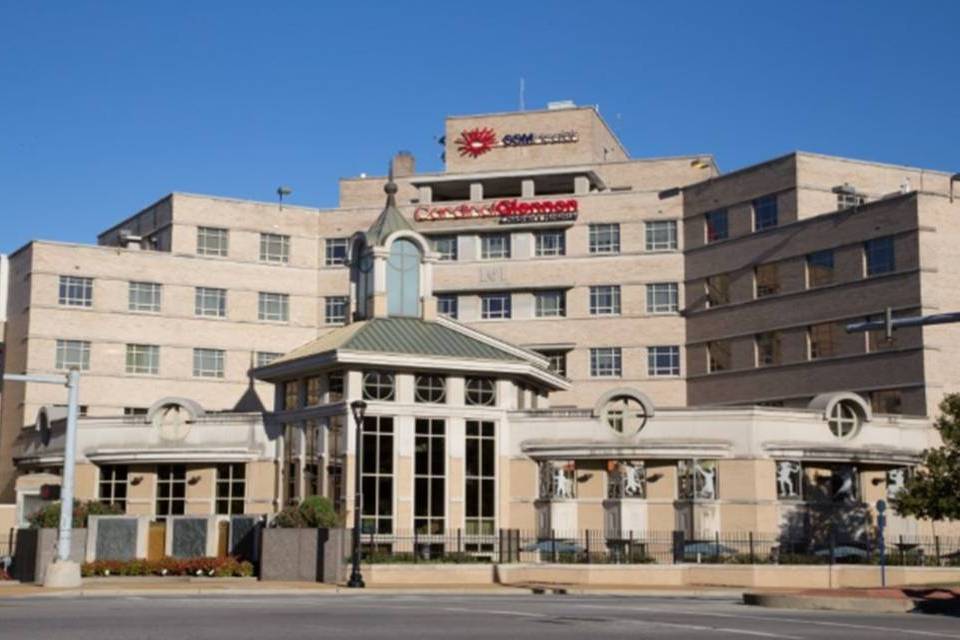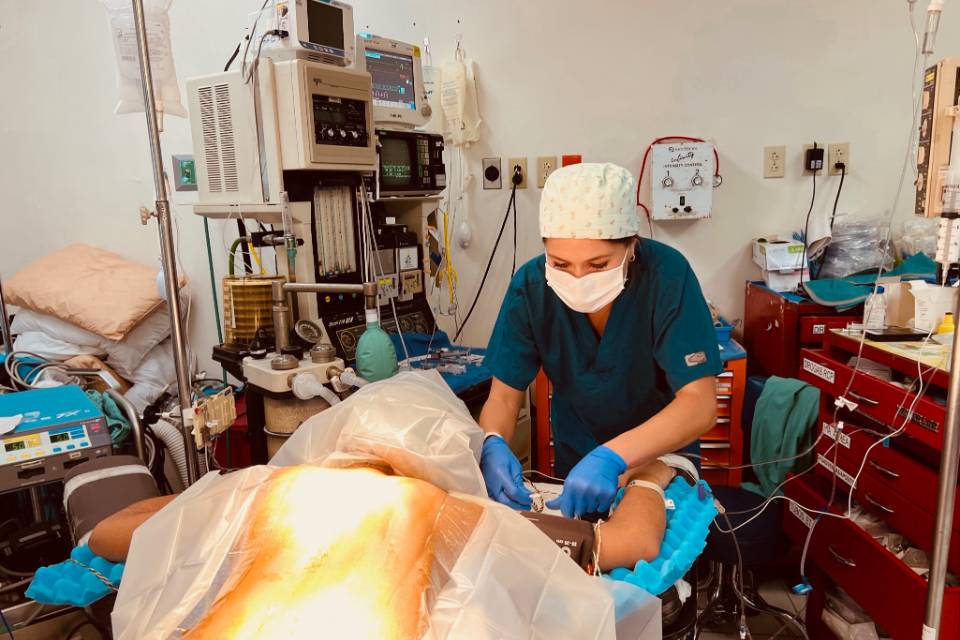Pediatric Anesthesiology Fellowship
Find complete information on the SSM Health/Saint Louis University School of Medicine Fellowship in Pediatric Anesthesiology.
Mission Statement
The overall mission of the SLU Department of Anesthesiology Pediatric Fellowship is to train anesthesiologists in the specialty of pediatric anesthesia so they can emerge as good clinicians, educators, researchers, and leaders in quality assurance in the perioperative arena.
Program Director's Message
Thank you for your interest in our Pediatric Anesthesiology Fellowship Program. SSM
Cardinal Glennon Children’s Hospital is affiliated with Saint Louis University School
of Medicine and is located in the heart of beautiful St. Louis. Cardinal Glennon Children’s
Hospital has 195 beds offering all the pediatric subspecialties, including a level
one trauma center, level 4 NICU, and a state-of-the-art PICU. In addition to all the
pediatric surgical subspecialties, we have a robust pediatric cardiac surgery service
and a busy Adult Congenital Heart Disease center. Our faculty consists of 14 highly
trained board-certified pediatric anesthesiologists. We perform approximately 9,500
anesthetics per year. This volume ensures that the fellow will undertake a varied
and abundant caseload to complete the ACGME-required number of cases within the first
half of the fellowship year. Our goal is to train the fellow to become an outstanding
clinician, educator, leader, researcher, and quality assurance officer in the field
of pediatric anesthesiology.
Naila Ahmad, M.D.
Program Director
Program Overview
The Pediatric Anesthesiology Fellowship training program at Saint Louis University is a one-year program accredited by the American College of Graduate Medical Education (ACGME) at SSM Health Cardinal Glennon Children's Hospital. We have one fellowship position per academic year. The program began in July 2015. All of our graduates have very successful careers and are Pediatric Anesthesiology Board Certified. Cardinal Glennon is a non-profit 195-bed inpatient and outpatient pediatric medical center in St. Louis. Founded in 1956, Cardinal Glennon is a Level 1 pediatric trauma hospital and a Level 4 neonatal intensive care unit, the highest available classifications for those specialties. Cardinal Glennon provides perioperative care for children from premature neonates, children, adolescents and older patients presenting with medical conditions ranging from common to the highest complexity.
Fellows will gain a wide variety of experience in managing difficult pediatric cases,
including complex congenital heart disease, neonates, premature neonates and transplants.
Our program offers substantial clinical anesthesia experience, from routine pediatric
cases to a full range of pediatric subspecialties including being one of the top pediatric
cardiology and heart surgery programs in the state of Missouri, according to U.S.
News and World Report. The hospital has 10 operating rooms, a hybrid cardiac catheterization
lab, EP lab, three procedure suites, interventional radiology, and four imaging suites
with over 9,500 anesthetic cases per academic year.
We offer a single fellowship position annually through the San Francisco Match. We are a fully accredited ACGME program offering fellows a broad, in-depth knowledge and experience in all aspects of pediatric anesthesiology. As an urban hospital located in the heart of St. Louis, fellows will enjoy a diverse patient population and a wealth of challenging cases. Fellows in our program consistently exceed all ACGME minimum case requirements.
Faculty
Pediatric anesthesiology fellows will work with faculty who are at the top of the field.
Learn More About St. Louis
Training and Curriculum
Fellows in our program experience a supportive collaborative environment with personal attention and instruction in both clinical and didactic training from 14 board-certified anesthesiologists. Fellows are given protected time for weekly teaching sessions during our morning didactics, attending multidisciplinary conferences, formal and informal ABA Oral Board preparation, and quality and/or presentation projects.
Clinical experience takes place at Cardinal Glennon Children’s Hospital with a one-month rotation in each of the following: pediatric general surgery, ENT, orthopedic, neurosurgery, ophthalmology, radiology, and plastic surgery/difficult airways. There are two full-month rotations in cardiac anesthesiology and a one-month rotation in the PICU. Fellows will also have rotations with our Acute Pain Service in collaboration with surgical and medical services. Fellows will have a minimal number of in-house calls and some index case calls.
Our program allows the fellow to assume graduated responsibilities and progressive autonomy as the academic year progresses, with opportunities to teach and supervise junior trainees as well as practice management.
Sample Schedule
Individual block schedules can be devised to accommodate fellows' needs and preferences. This ensures a positive education and work-life balance.
July
- Week 1: Orientation
- Week 2-4: Gen Peds/ENT
- Week 5: Vacation
August
- Week 1-5: Ortho
September
- Week 1-5: Pain
October
- Week 1-5: PICU
November
- Week 1-3 Cardiac
- Week 4: Vacation
- Week 5: Cardiac
December
- Week 1: Difficult
- Week 2: Airway
- Week 3: Dental
- Week 4 and 5: Plastics
January
- Week 1-5: Neuro
February
- Week 1: Ophthalmology
- Week 2: Vacation
- Week 3: Ophthalmology
- Week 4-5: General Peds
March
- Week 1-3: Elective
- Week 4-5: Pain
April
- Week 1-2: Offsite
- Week 3-5: GU
May
- Week 1-5: Cardiac
June
- Weel 1-2: PACU
- Week 3- ENT
- Week 4: OR
- Week 4: Coor.
Academic Medicine
Lectures take place every first and third Tuesday of each month from noon to 1 p.m.
Benefits
Fellows receive three weeks (21 days) of paid vacation. Fellows receive ample time in advance of the development of their rotations to allow the most flexibility for scheduling vacations. Fellows have their own office space for quiet study, reflection and relaxation.
Application Process
Our pediatric anesthesiology fellowship position is filled through the San Francisco Match. Supporting materials required include a current curriculum vitae, USMLE I, II, III scores, Basic exam scores and at least three letters of recommendation, including one letter from your program director or department chairman.
Didactic and Research
We have a robust anesthesiology didactic program, and fellows have the opportunity to present on a variety of topics, directed reading, M&M conferences, journal club, and Grand Rounds. Fellows will also have formal and informal mock oral board/board preparation. Fellows will be able to start research projects or will be included in ongoing research projects and will have the opportunity to publish. They will also be encouraged to present in national or local conferences.
Global Health
The pediatric anesthesia program at Saint Louis University also provides care to children who have no access to healthcare in various parts of the globe, especially in the Caribbean and Central America. We also provide anesthesia care to the most complex patients in those regions. Fellows will be able to join the mission trips if interested and will have an experience of their lifetime.

